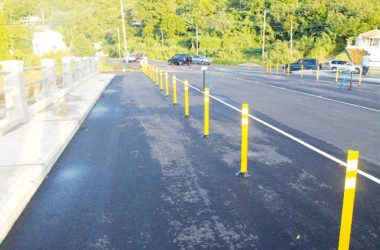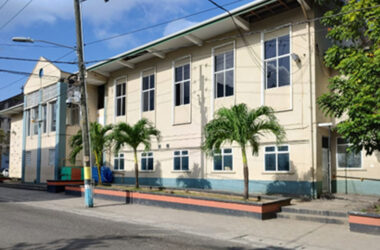THE situation at the Sir Arthur Lewis Community College (SALCC) is a growing cause for national concern.
For the past week, students, teachers and faculty staff have been up in arms about deteriorating conditions: teachers abandoned classrooms, protesting staff marched, the teachers union held crisis talks with administration.
As with the Babonneau Secondary School recently, the SALCC teachers are protesting about deteriorating physical conditions and health hazards. Several buildings have had to be vacated for mold-related reasons. Students and staff complain about losing recreational and other spaces, with classes having to be moved into unlikely places like labs and cafeterias. Some staff have even had (at times) to operate out of their vehicles in the parking lot.
Students have been relocated as far off-site as the George Charles Secondary School in Goodlands, who will have to return to a situation no better than they left.
The list of SALCC complaints just goes on and on.
A sorry situation indeed exists at one of the nation’s primary tertiary institutions. Confidence in the temporary leadership is at an all-time low, while the political directorate seems struggling to keep things under wraps. (The ministry won’t even acknowledge the real reason Babonneau Secondary teachers abandoned classes and the school was forcibly closed for repairs so soon after the long summer holidays.)
The situation is problematic.
Structural problems have been affecting most of the buildings for some time. But successive administrations have had their hands tied by preservationist complaints that unplanned repairs can possibly alter the architecture and negatively affect their historic value.
The previous SALCC board was replaced after it announced a new fee structure; but the interim board that replaced it doesn’t seem to have been able to resolve any of the many issues it inherited.
The policymakers are not known to have decided, one way or another, on the new fee structure that all agree is vital to replenish the college’s coffers, leaving parents and students uncertain about future education costs.
With the SALCC and the Ministry of Education both facing budgetary constraints, there can be no end in sight to the growing problems facing the administration and the interim board at the Morne Fortune complex.
Deteriorating building conditions will cost dollars that just aren’t there. But more than that, the mold problem is one that’s becoming almost a daily national nightmare. Most schools on the island are housed in aged structures and with repair budgets either too tight or diminishing, the mold problem – and the complaints and protests – will continue.
Teachers and faculty staff at other schools with similar problems will most likely resort to more collective protests to press the authorities to take their occupational health and safety hazards sufficiently into consideration. As a result, affected schools shall be closed for quick repairs, with students forced to stay home or hit the streets, parents in turn being forced to readjust their daily routines – and for unknown periods.
It would probably be an over-statement to charge – as many teachers and students do – that “Nothing’s happening” at SALCC. Indeed, quite a lot is happening: quiet protests are growing louder, protesting teachers are marching and students are getting restless. The alarm bells are ringing.
What’s not happening is the nation seeing or hearing the SALCC authorities doing or saying anything as yet, to at least offer some assurance that these situations are being addressed.
However, the SALCC’s future is much too important for its past and present troubles to continue to appear unabated or unaddressed. The present government does not have the greatest reputation for consultation, but we are here dealing with the future of St. Lucia. The wisdom of the widest group of persons should be plumbed in the interest of answers.
Soluble action is urgently needed but can only derive from the collective and not the particular and narrow.













